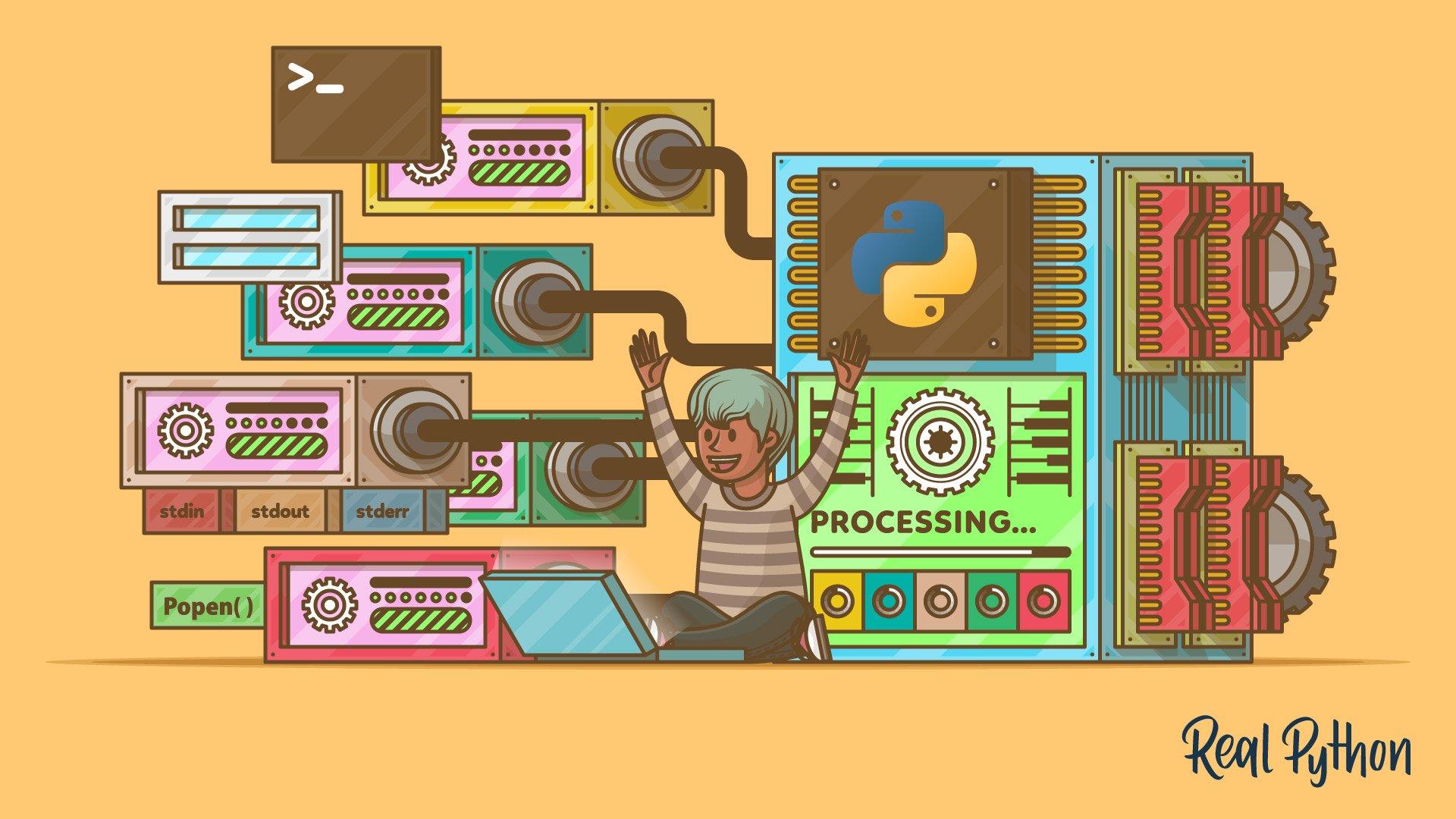subprocess
The Python subprocess module allows you to spawn new processes, connect to their input, output, and error pipes, and obtain their return codes. It’s a powerful tool for running and controlling external programs within a Python script.
Here’s a quick example:
>>> import subprocess
>>> result = subprocess.run(
... ["echo", "Hello, World!"], capture_output=True, text=True
... )
>>> result.stdout
'Hello, World!\n'
Key Features
- Runs and controls external processes
- Captures standard output and error streams
- Supports for piping data to and from processes
- Checks process return codes
Frequently Used Classes and Functions
| Object | Type | Description |
|---|---|---|
subprocess.run() |
Function | Runs a command and waits for it to complete |
subprocess.Popen |
Class | Executes a child program in a new process |
subprocess.PIPE |
Constant | Uses for piping data between processes |
subprocess.CompletedProcess |
Class | Represents a process that has finished executing |
subprocess.check_output() |
Function | Runs a command and returns its output |
Examples
Running a simple command and capturing its output:
>>> result = subprocess.run(["ls", "-l"], capture_output=True, text=True)
>>> print(result.stdout)
Executing a command and checking its return code:
>>> result = subprocess.run(["false"], capture_output=True)
>>> result.returncode
1
Capturing the output:
>>> output = subprocess.check_output(
... ["echo", "Hello from .check_output()"], text=True
... )
>>> output
'Hello from .check_output()'
Using a Popen object for fine-grained control over input/output (I/O) streams:
>>> process = subprocess.Popen(
... ["cat"], stdin=subprocess.PIPE, stdout=subprocess.PIPE, text=True
... )
>>> output, _ = process.communicate("Hello from Popen!")
>>> output
'Hello from Popen!'
Common Use Cases
- Automating shell command execution from Python
- Capturing and processing the output of shell commands
- Handling error codes returned by processes
- Piping data between Python and external commands
Real-World Example
Suppose you need to automate the process of converting Markdown files to HTML using the pandoc command. You can use the subprocess module to run pandoc from your Python script:
>>> from pathlib import Path
>>> import subprocess
>>> # Create a sample Markdown file
>>> input_path = Path("sample.md")
>>> input_path.write_text("# Hello, World!\n\nThis is a *Markdown* file.")
43
>>> output_path = Path("sample.html")
>>> try:
... result = subprocess.run(
... ["pandoc", str(input_path), "-o", str(output_path)],
... capture_output=True,
... text=True,
... check=True,
... )
... print("Conversion successful!\n")
... print("Generated HTML:\n")
... print(output_path.read_text())
... except subprocess.CalledProcessError as e:
... print("Conversion failed:")
... print(e.stderr)
... finally:
... input_path.unlink(missing_ok=True)
... output_path.unlink(missing_ok=True)
...
Conversion successful!
Generated HTML:
<h1 id="hello-world">Hello, World!</h1>
<p>This is a <em>Markdown</em> file.</p>
In this example, you use the subprocess module to automate the Markdown-to-HTML conversion process and handle any errors that might occur. Note that if you don’t have pandoc installed, then you’ll get a FileNotFoundError exception.
Related Resources
Tutorial
The subprocess Module: Wrapping Programs With Python
In this tutorial, you'll learn how to leverage other apps and programs that aren't Python, wrapping them or launching them from your Python scripts using the subprocess module. You'll learn about processes all the way up to interacting with a process as it executes.
For additional information on related topics, take a look at the following resources:
- Using the Python subprocess Module (Course)
By Leodanis Pozo Ramos • Updated July 18, 2025

